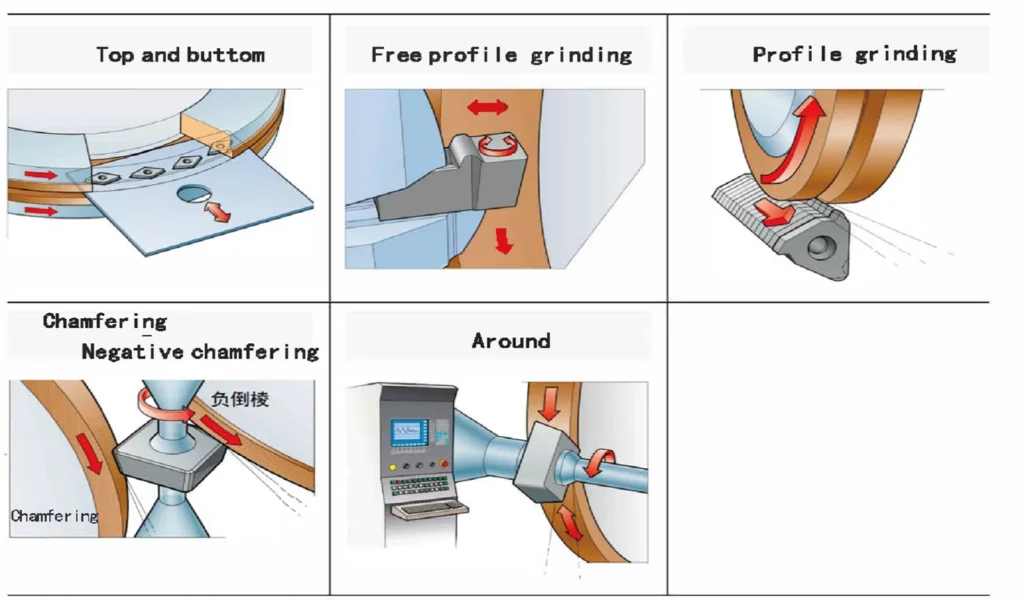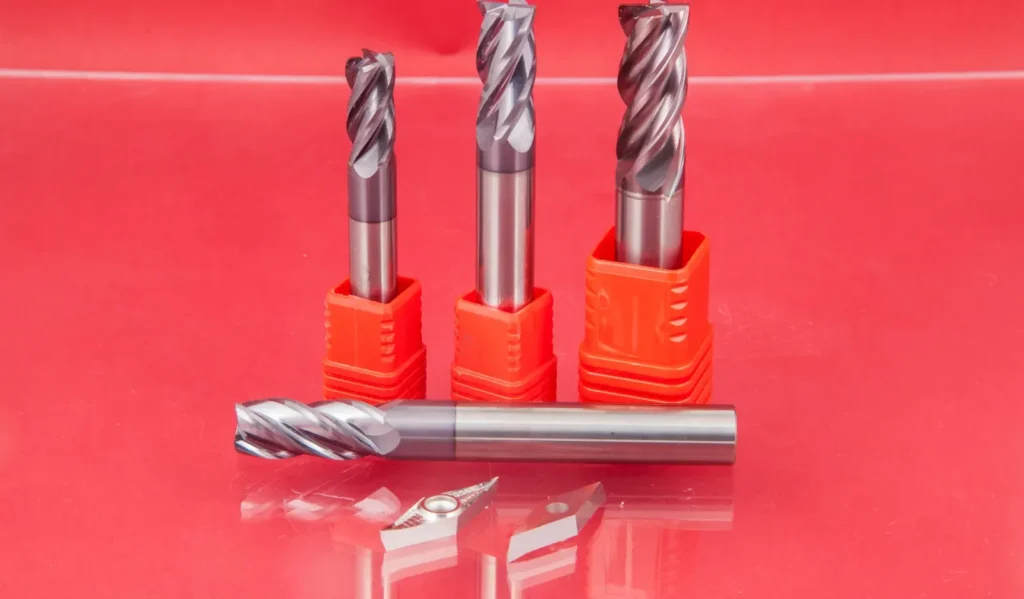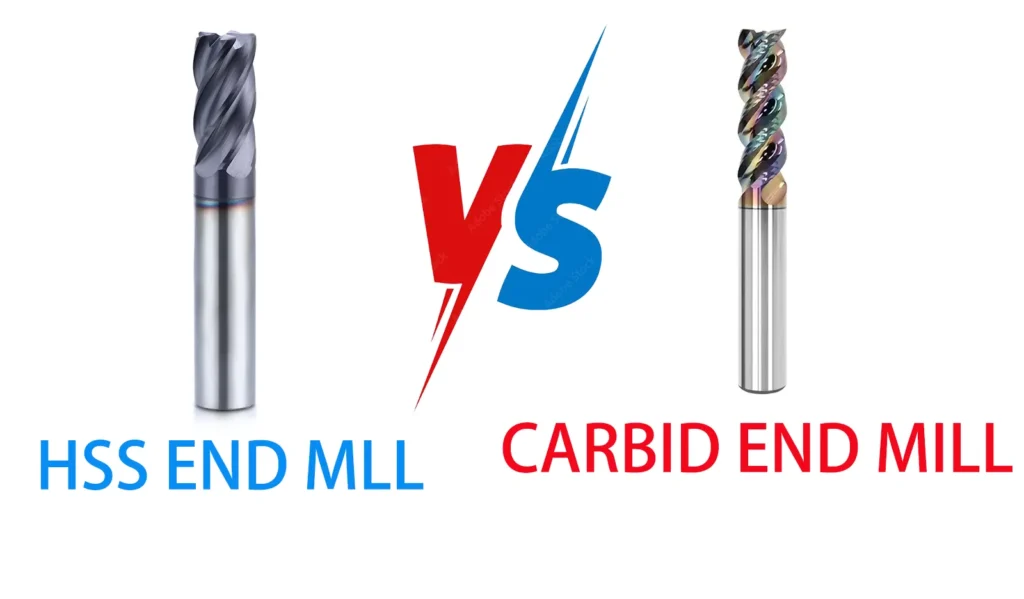불노즈 엔드밀 마스터하기: 응용 분야, 유형 및 비교
불 노즈 엔드 밀 은 가공 분야에서 필수적인 절삭 공구로, 다재다능함과 정밀함이 독특하게 조화를 이루고 있습니다. 숙련된 기계 기술자나 이 분야를 처음 접하는 사람은 이러한 공구의 복잡성을 이해하면 프로젝트의 품질과 효율성을 크게 향상시킬 수 있습니다. 이 종합 가이드에서는 불노즈 엔드밀의 정의, 다양한 응용 분야, 다른 인기 절삭 공구와 비교하는 방법을 살펴봅니다.
불노즈 엔드밀이란 무엇인가요?
코너 반경 엔드밀이라고도 하는 불노즈 엔드밀은 밀링 작업에 사용되는 절삭 공구입니다. 끝 절삭날과 측면 절삭날의 교차점에 둥근 모서리가 있는 것이 특징입니다. 이 둥근 모서리, 즉 “불 노즈”는 공구의 이름과 독특한 외관을 제공합니다.
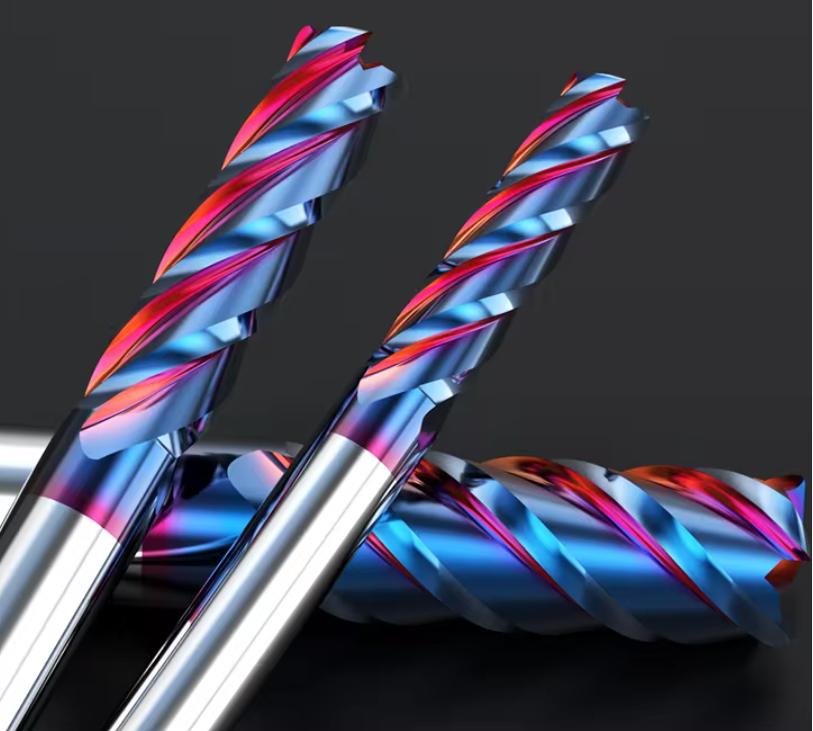
황소 코 디자인은 몇 가지 중요한 용도로 사용됩니다:
- 공구 강도 증가: 모서리가 둥글게 처리되어 응력 집중이 줄어들어 공구가 깨지거나 부러지는 일이 줄어듭니다.
- 표면 마감 개선: 반경이 넓어지면 표면 간 전환이 더 부드러워져 전체적인 마감이 더 좋아집니다.
- 향상된 칩 배출: 둥근 모서리는 절단 작업 중 칩을 효율적으로 제거하는 데 도움이 됩니다.
- 다용도성: 불노즈 엔드밀은 측면 및 엔드 밀링 작업을 모두 수행할 수 있어 활용도가 높은 공구입니다.
불노즈 엔드밀 사용 시기
가공 공정을 최적화하려면 불노즈 엔드밀의 사용 시기를 이해하는 것이 중요합니다. 다음은 이러한 도구가 탁월한 몇 가지 일반적인 시나리오입니다:
- 모따기 및 디버링: 불노즈 엔드밀의 둥근 모서리는 공작물의 매끄럽고 각진 모서리를 만드는 데 이상적입니다. 이는 모따기 작업과 이전 가공 공정에서 남은 버를 제거할 때 특히 유용합니다.
- 윤곽 밀링: 복잡한 3D 모양이나 윤곽이 있는 표면에서 작업할 때 불 노즈 엔드 밀을 사용하면 서로 다른 평면 간 전환이 더 부드러워져 최종 제품이 더 세련되게 완성됩니다.
- 포켓 밀링: 불 노즈 디자인으로 공작물에 포켓이나 캐비티를 만들 때 재료를 효율적으로 제거할 수 있습니다. 둥근 모서리는 이 과정에서 공구와 공작물에 가해지는 스트레스를 줄이는 데 도움이 됩니다.
- 마무리 작업: 불노즈 엔드밀은 매끄러운 표면을 생성할 수 있기 때문에 특히 윤곽이 있거나 조각된 표면의 정삭 가공에 탁월한 선택입니다.
- 숄더 밀링: 공작물의 숄더 또는 계단을 만들 때 불노즈 엔드밀은 모서리에서 더 부드러운 전환을 제공하여 응력 집중을 줄이고 부품의 전반적인 강도를 향상시킬 수 있습니다.
불노즈 카바이드 엔드밀: 타의 추종을 불허하는 절삭
불노즈 엔드밀은 다양한 재료로 만들 수 있지만, 카바이드 불노즈 엔드밀은 우수한 성능 특성으로 인해 특히 인기가 높습니다. 그 이유는 다음과 같습니다:
- 경도 및 내마모성: 초경은 고속강(HSS)보다 훨씬 단단하기 때문에 초경 불노즈 엔드밀은 단단한 재료를 가공할 때에도 절삭날을 더 오랫동안 유지할 수 있습니다.
- 내열성: 초경 공구는 경도를 잃지 않고 더 높은 온도를 견딜 수 있어 고속 가공 작업에 적합합니다.
- 강성: 초경의 강성은 특히 엄격한 공차가 필요한 응용 분야에서 더욱 정밀한 절삭과 더 나은 표면 마감을 가능하게 합니다.
- 수명: 카바이드 불노즈 엔드밀은 내마모성으로 인해 HSS 엔드밀보다 공구 수명이 길어 장기적으로 전체 툴링 비용을 절감할 수 있습니다.
- 생산성: 초경 공구의 우수한 성능으로 절삭 속도와 이송 속도가 빨라져 전반적인 생산성이 향상되는 경우가 많습니다.
불 노즈 엔드밀 반경: 올바른 크기 선택
불노즈 엔드밀의 반경은 성능과 적용에 있어 매우 중요한 요소입니다. 다음은 적절한 반경을 선택할 때 고려해야 할 몇 가지 사항입니다:
- 더 작은 반경(예: 0.005″~0.015″):
- 세밀한 디테일 작업과 좁은 모서리에 이상적
- 표면 간에 더욱 선명한 전환 제공
- 작은 필렛이나 모따기를 만들 때 유용합니다.
- 더 큰 반경(예: 0.030인치 ~ 0.125인치 이상):
- 향상된 도구 강도 제공
- 더 큰 부품에 더 매끄러운 표면 마감 제공
- 무거운 자재 제거 및 황삭 작업에 더 적합
- 중간 반경:
- 디테일 작업과 도구의 강도 사이에서 균형 잡기
- 다양한 애플리케이션에 활용 가능
반경을 선택할 때는 원하는 표면 마감, 가공할 재료, 프로젝트의 특정 요구 사항과 같은 요소를 고려하세요.
불 노즈 엔드밀 용도: 다용도 활용
불노즈 엔드밀의 다용도성 덕분에 다양한 산업 및 응용 분야에서 가치가 있습니다. 다음은 몇 가지 일반적인 용도입니다:
- 항공우주: 항공기 부품에 복잡한 윤곽 표면 만들기
- 자동차: 엔진 블록, 실린더 헤드 및 변속기 부품 가공
- 몰드 제작: 금형 캐비티의 매끄럽고 윤곽이 있는 표면 제작
- 일반 가공: 황삭부터 정삭까지 다양한 밀링 작업 수행
- 의료 기기 제조: 임플란트 및 수술 기구의 정밀하고 매끄러운 표면 만들기
- 금형 및 공구 제작: 부드러운 전환과 강한 모서리로 금형 및 공구 제작하기
불노즈 엔드밀과 볼노즈: 차이점 이해하기
황소 코와 볼 노즈 엔드 밀 는 언뜻 비슷해 보이지만, 서로 다른 용도에 적합한 뚜렷한 특징을 가지고 있습니다. 이 두 가지 인기 절삭 공구를 비교해 보겠습니다:
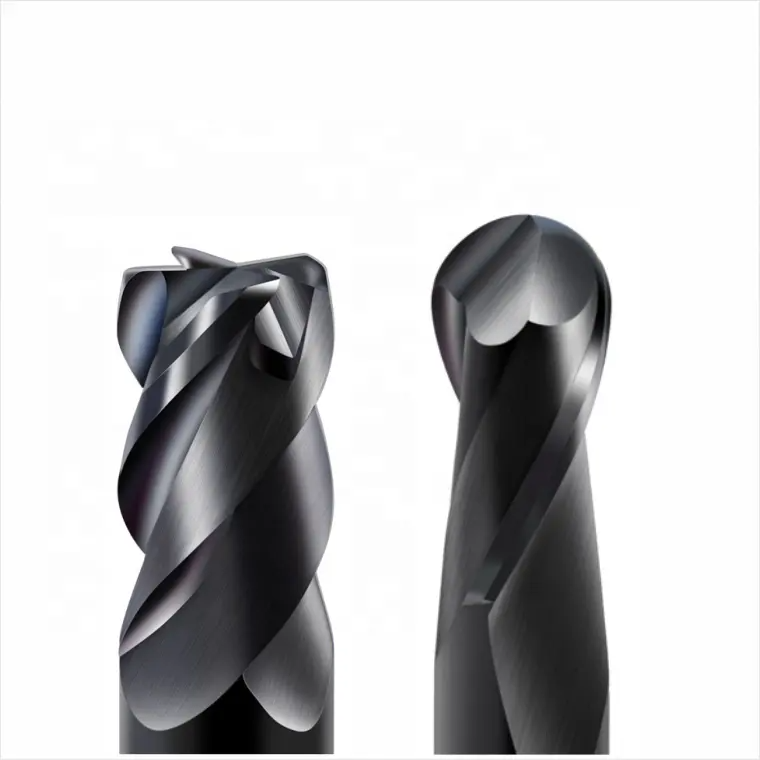
불 노즈 엔드 밀:
- 끝과 측면 절삭날이 교차하는 모서리가 둥글게 처리되어 있습니다.
- 평평한 바닥 절단면 유지
- 필렛, 모따기 및 표면 사이의 부드러운 전환을 만드는 데 이상적임
- 범용 밀링 및 마감 작업에 더 적합
볼 노즈 엔드밀:
- 반구형(공 모양) 끝이 있습니다.
- 3D 컨투어링 및 조각 작업에 탁월함
- 완전히 둥근 모서리와 복잡한 3D 모양을 만드는 데 이상적입니다.
- 복잡한 공작물 생산을 위해 3축 및 5축 머시닝 센터에서 자주 사용됩니다.
불노즈 엔드밀과 플랫 엔드밀: 올바른 도구 선택
또 다른 일반적인 비교는 황소 코와 플랫 엔드 밀. 차이점을 이해하면 특정 작업에 가장 적합한 도구를 선택하는 데 도움이 될 수 있습니다:
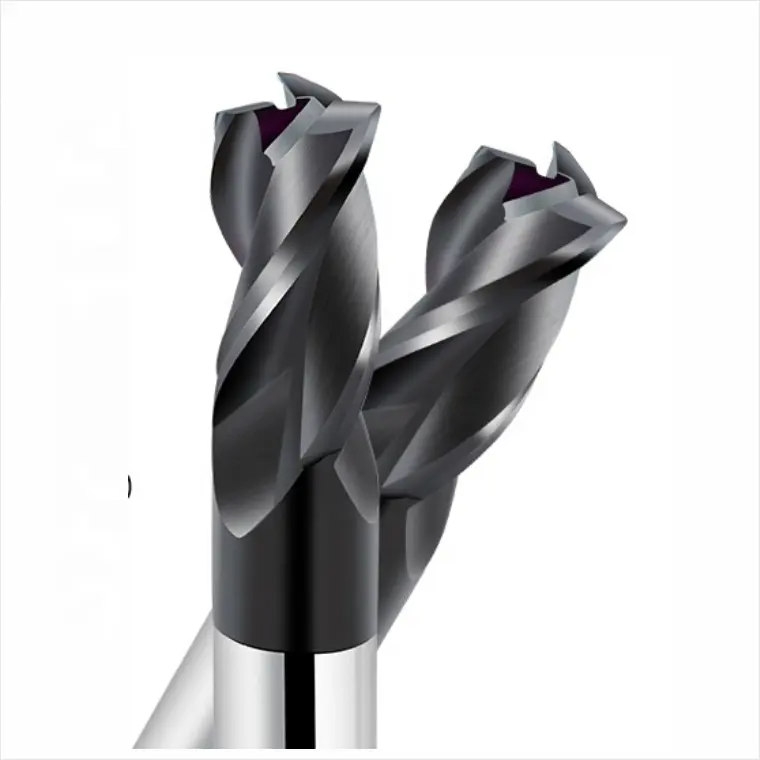
불 노즈 엔드 밀:
- 모서리를 둥글게 처리하여 공구 강도 향상
- 표면 간 부드러운 전환 생성
- 필렛 및 모따기 제작에 이상적
- 일부 애플리케이션에서 칩 배출 개선
- 측면 및 엔드 밀링 작업 모두 수행 가능
플랫 엔드 밀:
- 끝과 측면 절삭 날의 교차점에 날카로운 모서리가 있습니다.
- 선명한 90도 모서리 연출
- 바닥이 평평한 캐비티와 슬롯을 만드는 데 이상적입니다.
- 일반적으로 평평한 표면에서 무거운 물질을 제거하는 데 더 효율적입니다.
- 무거운 하중을 받으면 모서리가 깨지기 쉬울 수 있습니다.
불 노즈 대 플랫 엔드밀: 애플리케이션 고려 사항
불 노즈와 플랫 엔드 밀 중 하나를 결정할 때는 다음 요소를 고려하세요:
- 표면 마감: 매끄러운 표면 마감이 중요한 경우, 특히 표면 사이를 전환할 때 불노즈 엔드밀이 더 나은 선택인 경우가 많습니다.
- 모서리 요구 사항: 날카로운 90도 모서리가 필요한 응용 분야에는 평평한 엔드밀이 더 적합합니다.
- 공구 수명: 공구 모서리에 응력이 높은 응용 분야에서는 불노즈 엔드밀의 강도가 높아 공구 수명이 길어질 수 있습니다.
- 재료 제거율: 평평한 표면에서 대량의 재료를 제거하려면 평평한 엔드밀을 사용하는 것이 더 효율적일 수 있습니다.
- 다용도성: 부드러운 전환으로 측면 밀링과 엔드 밀링을 모두 수행할 수 있는 공구가 필요한 경우, 불노즈 엔드 밀이 더 다재다능한 옵션인 경우가 많습니다.
볼 노즈와 불 노즈 엔드밀의 차이점: 자세히 살펴보기
볼 노즈와 불 노즈 엔드 밀의 차이점을 더욱 명확히 하기 위해 두 밀의 주요 차이점을 살펴보겠습니다:
- 끝 모양:
- 볼 노즈: 완전히 반구형인 끝부분
- 불 코: 모서리가 둥근 평평한 끝부분
- 절단 작업:
- 볼 노즈: 3D 컨투어링에 이상적인 포인트 컨택 커팅
- 불 노즈: 라인 접촉 절단, 일반 밀링 및 정삭에 더 좋음
- 표면 마감:
- 볼 노즈: 3D 컨투어링으로 스캘럽 모양의 표면 마감을 연출합니다.
- 불 코: 둥근 모서리로 더 매끄러운 평평한 표면을 만듭니다.
- 애플리케이션 포커스:
- 볼 코: 주로 3D 조각 및 컨투어링에 사용됩니다.
- 황소 코: 일반 밀링, 모따기 및 마감에 사용되는 보다 다재다능한 제품입니다.
- 프로그래밍 고려 사항:
- 볼 노즈: 복잡한 3D 경로를 위한 특수 CAM 소프트웨어가 필요한 경우가 많습니다.
- 불 노즈: 일반적으로 대부분의 밀링 작업에서 프로그래밍이 더 간단합니다.
결론: 불노즈 엔드 밀의 힘 활용하기
불노즈 엔드밀은 가공 분야에서 다재다능하고 강력한 공구입니다. 납작한 절삭날과 둥근 절삭날의 장점을 결합한 독특한 디자인으로 다양한 응용 분야에서 매우 유용하게 사용할 수 있습니다. 부드러운 전환 및 필렛 제작부터 일반적인 밀링 작업 수행에 이르기까지 불노즈 엔드밀은 강도, 정밀도 및 다용도성이 균형을 이루고 있습니다.
불노즈 엔드밀의 사용 시기, 볼 노즈 및 플랫 엔드밀과 같은 다른 절삭 공구와 비교하는 방법, 반경 선택 및 재료 선택(예: 카바이드)과 같은 요소의 중요성을 이해함으로써 기계 가공자는 공정을 최적화하고 우수한 결과를 얻을 수 있습니다.
항공우주, 자동차, 금형 제작, 일반 가공 등 어떤 분야에서 작업하든 불노즈 엔드밀을 공구 세트에 통합하면 역량을 강화하고 완제품의 품질을 향상시킬 수 있습니다. 다른 절삭 공구와 마찬가지로, 불노즈 엔드밀의 적절한 선택, 사용 및 유지관리는 잠재력을 극대화하고 가공 프로젝트에서 최상의 결과를 보장하기 위한 핵심 요소입니다.
불노즈 엔드밀이란 무엇인가요?
불 노즈 엔드밀은 밀링 작업에 사용되는 특수 절삭 공구입니다. 다음은 불노즈 엔드밀에 대해 이해해야 할 핵심 사항입니다:
디자인: 끝 절삭날과 측면 절삭날이 교차하는 부분에 둥근 모서리(“황소 코”)가 있습니다.
목적: 둥근 모서리는 공구 강도를 높이고 표면 조도를 개선하며 칩 배출을 향상시키는 역할을 합니다.
구조: 바닥이 평평하고 모서리가 둥글며 플랫 엔드밀과 볼 노즈 엔드밀의 요소를 결합했습니다.
다용도성: 불노즈 엔드밀은 측면 및 엔드 밀링 작업을 모두 수행할 수 있습니다.
적용 분야: 일반적으로 모따기, 컨투어링, 포켓 밀링, 마감 작업 및 표면 사이의 부드러운 전환을 만드는 데 사용됩니다.
장점: 응력 집중을 줄여주는 설계로 특히 무거운 절삭 작업 시 공구가 깨지거나 파손되는 일이 적습니다.
변형: 불노즈 엔드밀은 다양한 가공 요구에 맞게 다양한 크기와 반경으로 제공됩니다.
볼 노즈와 엔드 밀의 차이점은 무엇인가요?
볼 노우즈와 엔드밀의 주요 차이점은 팁 형상에 있으며, 이는 다양한 가공 작업에 대한 적합성에 직접적인 영향을 미칩니다. 엔드밀은 황삭 및 평평한 표면 가공에 탁월한 반면, 볼 노즈 밀은 정삭 및 복잡한 디테일 가공에 선호됩니다.
불코 반경이란 무엇인가요?
불코 반경은 둥근 모서리 또는 모서리를 의미합니다. 미적 및 기능적 목적으로 다양한 애플리케이션에서 자주 사용됩니다.
어떤 엔드밀을 사용해야 하는지 어떻게 알 수 있나요?
올바른 엔드밀을 선택하려면 공작물 소재, 가공 방법, 엔드밀 유형, 플루트 수, 직경, 코팅 및 기타 여러 요인을 조합해야 합니다. 황삭, 정삭, 홈 가공, 3차원 컨투어링 등과 같은 다양한 가공 요구 사항에 따라 다양한 유형의 엔드밀을 선택해야 합니다. 예를 들어 황삭에는 플루트가 적은 직경이 큰 엔드밀을 선택하고, 정삭에는 플루트가 많은 직경이 작은 엔드밀을 선택할 수 있습니다.
불노즈 엔드밀 크기
다양한 옵션이 있지만, 불노즈 엔드 밀의 일반적인 크기는 다음과 같습니다:
지름: 1/32″, 1/16″, 1/8″, 3/16″, 1/4″, 5/16″, 3/8″, 1/2인치 및 미터법 등가물.
코너 반경: 일반적으로 직경의 작은 부분부터 상당 부분까지 다양합니다.
섕크 지름: 일반적인 크기에는 1/8인치, 3/16인치, 1/4인치, 5/16인치, 3/8인치 및 1/2인치가 있습니다.
